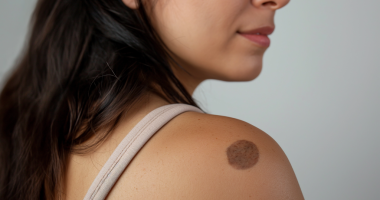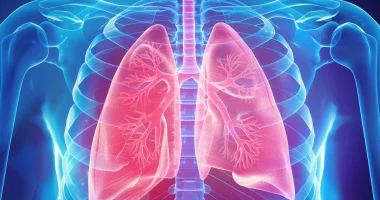Esophageal stricture
Definition
Esophageal stricture is a narrowing of the esophageal tube lumen caused by connective tissue overgrowth in its wall. It develops against esophagitis, peptic ulcers, chemical burns of the esophagus, and iatrogenic causes. It is accompanied by dysphagia, belching, pain in the throat and behind the sternum, and weight loss. The main methods of diagnosing strictures are esophagoscopy and esophageal radiography. Treatment methods include balloon dilatation of strictures, bougienage, and esophagoplasty.
General information
Scarring changes of the esophagus caused by various reasons occupy the second place among the diseases of this organ after esophagitis. Burn strictures are formed in 70-80% of patients. The prevalence of pathology tends to grow annually, and the share of children, young, and able-bodied patients increases in the structure of morbidity. Developing optimal methods of esophageal scar stricture elimination, allowing the preservation of normal physiology of digestion, is an urgent problem of modern abdominal surgery.
Causes
Benign scar strictures develop due to esophageal diseases and damage of the organ wall by aggressive agents during medical manipulations. In the structure of etiologic factors prevail:
- Esophageal burns. They can be chemical, thermal, or radiation. The most common are chemical injuries caused by accidental or intentional ingestion of caustic substances (acids, alkalis). Post-burn scar constrictions of the esophagus are formed within 2-3 years after the injury.
- Reflux esophagitis. Gastroesophageal reflux in GERD contributes to the development of peptic strictures. Aggressive components of gastric contents and prolonged contact with the esophageal mucosa cause deep peptic ulcers, usually in the organ’s lower third. Scarring ulcers lead to the narrowing of the esophageal lumen.
- Other esophagitis. In some cases, scar strictures result from severe esophagitis of viral origin (herpetic, cytomegalovirus, HIV-associated), bacterial genesis (tuberculosis, syphilis, diphtheria), and esophageal mycoses. A separate group is drug-induced esophagitis caused by taking NSAIDs, antibiotics, corticosteroids, iron preparations, and other drugs.
- Esophageal trauma. Scarring deformities associated with medical interventions may occur after esophageal bougie, surgeries (esophageal-gastric and esophagogastric-intestinal unions), and sclerosing of esophageal varices. Post-radiation strictures are formed after radiotherapy of thyroid cancer and other tumors of the neck. Posttraumatic constrictions are formed due to wounding of the esophageal wall by a foreign object.
Classification
Esophageal scar strictures are classified based on various criteria: localization, extent, degree of severity, causes, etc. High, middle, low, and combined strictures are distinguished by location in the esophagus. In terms of extent, there are limited (up to 5 cm), extended (more than 5 cm), and total stenoses. By origin, strictures are divided into postburn, peptic, and postoperative.
Based on endoscopy findings, there are 4 degrees of esophageal narrowing:
- I – the diameter of the esophagus in the area of stricture is 9-10 mm; a medium-thick gastroscope passes through this area;
- II – in the area of narrowing, the esophageal diameter does not exceed 6-8 mm, and the stricture is passable for bronchoscope;
- III – the esophageal lumen is narrowed to 3-5 mm and is passable only for ultrathin endoscope;
- IV – Complete obliteration or narrowing of the esophagus to 1-2 mm; stricture is impassable for endoscopic instruments.
Symptoms
Esophageal scar strictures are accompanied by pain, dysphagia, belching, and weight loss. Pain sensations are usually caused by esophagitis and can be localized in the throat, behind the sternum, or in the epigastric region.
The most striking and typical symptom of esophageal strictures is dysphagia. Swallowing is painful and requires effort to move the food clump. Patients chew food for a long time and drink water to adjust to their condition. A steady increase in swallowing disorders and improvement may be associated with inflammation subsidence and edema reduction.
Peptic strictures of the esophagus are characterized by heartburn and sour belching. With significant scar stenosis, stagnant food is vomited with an admixture of mucus and bile. In severe cases, patients can take only liquids. They constantly experience a feeling of hunger and thirst, weakness, and steadily losing weight.
Diagnosis
Patients with complaints of pain in the epigastrium, belching, and swallowing problems turn to a gastroenterologist. However, if scar stricture of the esophagus is detected, patients are referred to the consultation of an abdominal surgeon, who decides on the necessary therapeutic tactics. The diagnostic examination includes:
- Esophageal endoscopy. Esophagoscopy detects scarring changes in the mucosa through whitish strands and suprastenotic dilation of the esophagus. Also, the study allows you to determine the location, extent, and degree of narrowing. Endoscopic examination is necessarily completed by biopsy.
- Esophageal X-ray. X-ray diagnostics with water-soluble contrast or barium suspension help study the esophagus’s contours and relief, detect filling defects, and assess the organ’s peristalsis. The study can also reveal the presence of concomitant pathology: hiatal hernia, diverticula, or esophageal-respiratory fistula.
Differential diagnosis
Esophageal scar stenoses require differentiation from other pathologies accompanied by dysphagia syndrome, pain, and regurgitation:
- esophageal stenosis caused by external compression (tumor, abnormal vessels, enlarged lymph nodes);
- esophageal cancer;
- cardiospasm;
- pseudodysphagia in thyroid diseases, pharyngeal neurosis, and other pathologies;
- with an esophageal foreign body.
Treatment of esophageal stricture
Narrowing of the esophagus, preventing the normal movement of food, requires surgical treatment. To date, minimally invasive and surgical methods for the elimination of esophageal scar strictures have been proposed, the choice of which depends on the level, degree, and age of the pathology. Each of them has its indications and advantages in this or that clinical case:
- Dilation and bougienage. In case of small and limited strictures, balloon (pneumo- or hydro-) dilatation of the stricture is performed. Bougienage of the esophagus can be performed under the control of esophagoscopy or X-ray. During one session, no more than 2-3 bougies of different diameters are used. However, such interventions may be complicated by restenosis, esophageal perforation/rupture, and bleeding.
- Esophagoplasty. Indications for esophagoplasty are complete obliteration of the esophagus, ineffectiveness of bougie, and recurrence of scar strictures. The most widespread is esophageal resection, a one-stage repair with a graft from the stomach, small or large intestine. Depending on the extent of the stricture, esophagoplasty can be segmental or total.
Auxiliary surgeries providing enteral nutrition at the treatment stage include gastrostomy and enterostomy. Surgical manipulations are performed against the background of complex antisecretory and enveloping therapy, including proton pump inhibitors and antacids.
All these treatment options are available in more than 570 hospitals worldwide (https://doctor.global/results/diseases/esophageal-stricture). For example, Esophageal dilation can be performed in 38 clinics across Germany for an approximate price of $4,4 K (https://doctor.global/results/europe/germany/all-cities/all-specializations/procedures/esophageal-dilation).
Prognosis and prevention
Esophageal scar strictures are severe disabling conditions that require complex treatment. The main methods of stricture repair are endoscopic (bougienage, dilatation, endoprosthesis) and surgical (esophagoplasty). According to various authors, at the present stage, 45-96% of patients manage to restore esophageal patency using various methods. The main problem and criterion of treatment efficiency is the frequency of restenosis development.
Prevention of scar strictures is to prevent esophageal burn injuries and timely treatment of GERD and other esophagitis. Medical manipulations on the esophagus should be carried out carefully and gently to avoid trauma with subsequent formation of stenosis.

